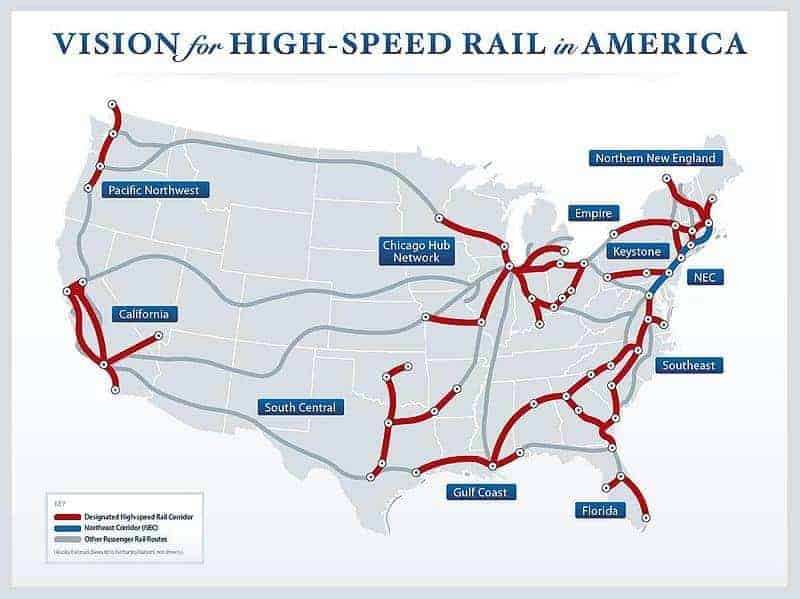There are those who rail against California’s bullet-train project asserting that the system will require subsidization. They argue that there isn’t enough available capital even to fund construction of 119 miles of line between Shafter and Madera, much less build 520 miles from San Francisco to Los Angeles and Anaheim (the complete Phase 1 portion). These critics, detractors, naysayers would do well to read the May 1, 2019 Project Update Report.
So, I can’t help but notice all the delivery vehicle goings on throughout the neighborhood, drivers delivering various items to front doors day in and day out and can’t help but wonder how such could translate over to long-distance rails.
For France’s Train a Grande Vitesse (Train of Great Speed or TGV for short), there once was the La Poste. What La Poste had to do with were specially equipped high-speed trains to handle parcels and mail operating on specific routes. The trains were liveried in yellow so as to prevent their being mistaken with their passenger train counterparts and they typically ran during the night.
This type of train service is one among a number of ways to bring in added revenue and the type of cargo carried could be expedited (express) freight, meaning being time-sensitive in nature.
So, in the United States, with parts of one bullet-train line already under construction at “more than 32 active construction sites” throughout California’s San Joaquin Valley, there are two more high-speed train endeavors proposed and planned for operation, the first between Las Vegas, Nevada, and now San Bernardino with the ultimate aim of making Los Angeles, California the west-end originating/terminating point. Then there is the system right now in the planning process for Dallas-Houston service. It is anticipated that the latter two will commence construction later this year.
At any rate, in elaborating more on the aspect of fast freight, by taking on that capability, such can help pay bills, cover expenses.
As such, road users might appreciate not having to jockey for a position on congested freeways or sharing the pavement with 80,000 pound tractor-trailer trucks. High-speed trains do not have to compete for precious highway space. Not only do they have their own independent right-of-way, but can operate safely at speeds as much as four times faster than the fastest speeds permitted to trucks on highway lanes.
What’s more, because of an electric power feed, high-speed train operations are clean operations. There are none of the toxic chemicals and particles that diesel-locomotive-exhaust contains. Compared to highway travel, electric, high-speed trains are far friendlier on the environment and to air.
In the Interstate 15 (I-15) service lane, meanwhile, there are 50 million people taking trips between southern Nevada and southern California, annually. At times the thoroughfare resembles a parking lot. Imagine if time-sensitive, express freight could run between the two regions overnight. High-speed rail can fill the bill. Now take that and apply to California’s and Texas’ future high-speed rail programs too. Just think of the possibilities! Offering such a service could shave valuable minutes off of delivery schedules.
A freeway-congestion alleviator, a toxic-air purifier, an express or expedited rail-cargo conveyor, with the potential for such to be both revenue-generator and profit-maker and, all, with no on-track interference from regular passenger- and freight-trains either.
So, tell me: High-speed freight rail: What’s not to like?!
Image above: Federal Railroad Administration
– Alan Kandel

